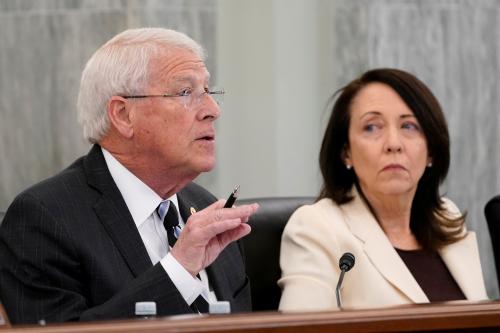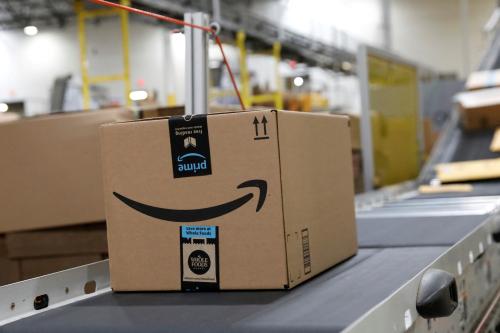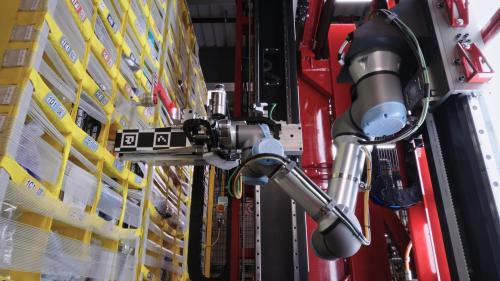Digitalization is rapidly changing U.S. labor market dynamics.
Beyond increasing the number of workplaces that require digital skills and engagement with computers, the spread of new technologies has reshaped worker power and the relationship between labor market tightness and wage growth. In particular, this has manifested in anti-competitive, winner-take-all dynamics and skill-biased technological change, both of which have suppressed wage growth. These dynamics have been well documented by economists like David Autor and Daron Acemoglu. Yet they hold particular importance today as the Federal Reserve raises interest rates. Indeed, there is mounting evidence that an unequal embrace of digitalization has helped create the macroeconomic conditions—marked by high levels of vulnerability for low and middle wage workers—which are making recession risk greater today.
To grasp how an unequal embrace of digitalization has primed the US for a recession, it is important to nestle this story within the broader context of why U.S. inequality has grown since the late 1970s. Changes in tax policy, the fall in the real value of the minimum wage, outsourcing, financialization, and a decline in unionization have all abetted the growth of U.S. economic inequality. An unequal macroeconomy—one in which 41.4 percent of Americans are classified as low-income and the top 1 percent of earners make 20 times more than the bottom 90 percent—is not the consequence of a singular policy or exogenous shock. Rather, it is a result of a complex amalgam of forces that have radically restructured the power dynamics that underlie the U.S. economy.
Yet digitalization is also a part of this story. Fears about labor automation, due to technologies like artificial intelligence, and the loss of available jobs in the economy have been widely popularized by public figures such as Elon Musk and Andrew Yang. Yet there is also limited evidence of aggregate job losses. Instead, digitalization has reshaped the nature of jobs that the economy demands while also rejigging the employer-employee dynamics that help determine wage growth. And this is why the broader story of stagnant wage growth and economic inequality in the U.S. is one closely linked to broader trends in digitalization.
First, there has been a clear reduction in labor market competition and worker power. A recent Treasury report took aim at this phenomenon, highlighting the impact of winner-take-all dynamics and market concentration on reducing wage growth. These trends have, as a 2017 NBER paper showed, been heavily aided by digitalization, which allows large corporations to serve people without geographic barriers. Companies like Uber, Google, and Microsoft, for instance, have the ability to offer their products to people as easily in Appalachia as they can in Silicon Valley. And the result is market domination by a small number of technology companies as well as a geographic concentration of economic growth in primarily coastal urban hubs.
The consequent rise of anti-competitive markets is, furthermore, most borne out in the number of U.S. districts in which there are too few opportunities for decent work. This is partly a result of digitalization-enabled concentration. As the U.S. Treasury report highlights, although aggregate labor market figures indicate tightness and high competition, there is often extremely limited competition in local U.S. districts that are more removed from urban centers of economic growth. The result is more stagnant wage growth for the middle, and especially low wage occupations that dominate these non-urban environments.
The rise of market concentration has additionally coupled with a perfect storm of other elements to reduce worker power. This includes union-squashing practices, contracting out labor, and non-poach agreements, where employees are not represented as part of pacts. For example, companies may no longer hire janitorial services and instead contract out the work to individuals that will accept lower pay, fewer benefits, and less bargaining power than full-time employees. Economists Arindrajit Dube and Ethan Kaplan estimate that the contracting out of janitors and security guards reduced those respective wages by between 4 percent and 24 percent. The increasingly anti-competitive measures U.S. companies have taken to keep wages down partly explain the decline in labor’s share of income and the stagnation of wage growth, which continue to trail inflation despite ‘tight’ labor markets. And the capacity of employers to take up anti-competitive labor market behavior is significantly abetted by digitalization-enabled market concentration
This weakening of labor market competition, however, only partly explains the story of how digitalization has made the U.S. vulnerable to stagflation. A second key aspect—also mentioned in the Treasury report—is skill-biased technological change. Rather than replacing work altogether, economists like David Autor and David Dorn show that digitalization has ‘hollowed out’ the middle wage portion of the U.S. labor market. The result is growth in the share of high wage and low wage occupations, which partly explains the expansion of wage inequality since the 1980s. And the consequence of this is a highly unequal labor market and an economy with a smaller middle class. These dynamics partly explain why some economists worry the U.S. is experiencing a kind of master-servant economy, which is not good for long term growth, let alone an auspicious signal of fairness or political stability.
Yet why does this growth in labor market inequality matter right now, as the Federal Reserve continues its rate hikes? Given the current crisis of price growth, many economists have sought comfort in the notion that Americans hold a glut of savings, and that the labor market is robust enough to be able to endure rate hikes without sending the economy into recession. Thus, optimists believe the U.S. will be more insulated from the stagflation of the 1970s. What a closer look at the labor market clearly shows, however, is a stark inequality of outcome and resource, in large part borne out of the changing labor dynamics spurred by digitalization.
To find evidence of how labor market inequality is making the U.S. vulnerable to a recession, it is therefore worth looking more closely at how robust labor markets truly are, and whether Americans have sufficient savings to fall back on in the event of an income shock. On the first point, we have already highlighted how digitalization has contributed to widening wage inequality, which has been marked by a reduction of worker power and, now amid inflation, a real decline in wage values for lower-income individuals. And so, although labor markets are indeed ‘tight’ on one level, such tightness very clearly has not manifested in greater worker protection and compensation as optimists today imagine. An MIT study highlighted this phenomenon in early 2020, showing the stark inequality between savers and debtors in the US. And the result is a greater share of Americans who live with high levels of economic precarity and risk. Roughly 40 percent of Americans have trouble paying for food, medical care, housing, and other utilities; nearly half have no retirement savings; 63 percent could not afford an unexpected $500 emergency expense; 70 percent of college graduates have $15,000 or more in outstanding student loan debt.
These figures, far from signaling an American working class well prepared to deal with income shocks, are indicative of deep vulnerability. And this vulnerability, which has been kindled by a disequalizing embrace of digital technology, offers an effective exemplar of how broad macroeconomic inequality can weaken a country’s economic outlook. As a University of Pennsylvania study found in 2016, high levels of inequality make recessions deeper and growth harder to sustain. This too is a central conclusion of Thomas Philippon’s work in The Great Reversal. The palpable vulnerability of millions of Americans to an income shock provides a case study in how inequality increases economic risk. And it belies the optimistic proclamations of some politicians and economists, who cite aggregate employment, wage, and savings figures without a more granular look at distribution.
I believe that U.S. inequality presents one of the most significant economic hazards to the country. Beyond just a matter of fairness, the looming prospect of a recession highlights how decades of anti-inclusive economic growth have made the country more vulnerable. And so, as the Federal Reserve increases interest rates to cut off price growth, the U.S. should look to protect the livelihoods of Americans who do not have the savings or means to withstand a recession, on top of falling real wages. Given the clear need for economic tightening, the U.S. should use this moment to crack down on corporate taxes, ensuring that companies are paying their fair share while simultaneously providing improved transfers and aid to vulnerable individuals. Moreover, it should use this moment to provide a rationale for greater geographic inclusion in its future plans for digital innovation. With the Biden administration continuing to develop a national AI strategy, working to improve geographically diffuse digital innovation will help distribute the gains of U.S. economic growth to a greater number of people.
And in doing so, the U.S. can offer a correction to the decade that followed the 2008 Financial Crisis, which was marked by considerable growth in economic inequity on all fronts. The current recession risks offer a cautionary tale to policymakers about the perils of allowing inequality to grow for too long. In order to preserve the U.S.’ economic future, reducing inequity and promoting an inclusive embrace of digital technology are crucial. The post-World War II middle class was a creation of policy and diffuse investment in innovation. That economic structure ushered in decades of strong economic growth and provided insulation against economic shocks. America’s focus now should be to usher in a new era of middle-class robustness in the age of digitalization.
The Brookings Institution is committed to quality, independence, and impact.
We are supported by a diverse array of funders. In line with our values and policies, each Brookings publication represents the sole views of its author(s).








Commentary
An unequal embrace of digitalization may contribute to recession risk
July 26, 2022